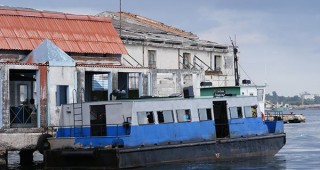Located on the famous corner of 23 and L streets, the Habana Libre Hotel, with its 25 floors and 630 spacious rooms, stands majestically and offers an incomparable view of the bay.
The building occupies a full city block. It maintains the differentiation of functions characteristic to modernism with its large lobby, shops, parking spaces, bars, theatre, nightclubs, swimming pool and cabanas, and the 21-floor tower of guest rooms. The hotel also boasts valuable works of art. The spectacular mural on its façade on L St., Las frutas cubanas, by Amelia Peláez, which had to be taken down only a year after the opening of the hotel as many of its tiles had come off, was restored in 1997 and 6,700,000 pieces of glazed tiles went into the restoration. The mural in glazed terracotta tiles Historia de las Antillas by René Portocarrero is placed at the mezzanine bar. A few years after the Havana Hilton became the Habana Libre, the mural Carro de la Revolución, by sculptor Alfredo Sosabravo, made of glazed red clay, also graced the hotel’s walls. Many paintings by important Cuban painters also decorate the hotel. In 1997, an electroacoustic fountain, Clepsidra, made by sculptor Rita Longa, was installed in the lobby. A few seconds before the hour, a combination of lights and electroacoustic music by composer Juan Blanco get into action. Fidel Castro took everyone by surprise when he decided to set up the Revolution’s Command Post in Room 2324, the “Continental Suite,” of this hotel.










 Modern
Modern



